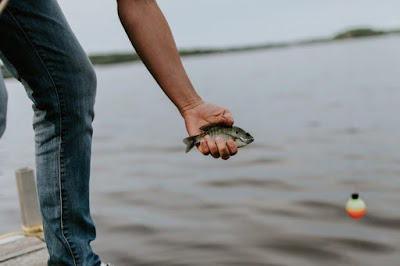It’s the best season for bluegill fishing! Tier abundance and position towards the relative bottom of the gamefish food chain makes them readily available in almost all parts of the United States. The bluegill usually has a dark olive-green back with lighter sides. Each side has between five and nine dark vertical bars.
They are great to eat and are actually viewed as food that a sportfish. Here are some tips to follow to increase your success in catching bluegill.
Know Where to Find Bluegill
Bluegills are originally native to the Great Lakes, Mississippi, and they have been introduced across the nation for forage and sport. This fish prefers clear and quiet water where the sun shines. Clearwater means that the vegetation under the water’s surface can thrive, offering a home for the bluegills’ food sources. Because bluegill prefers to remain close to shore, it’s easy to fish for them from banks or bridges.
Lakes, reservoirs, slow-moving streams, and ponds are also possible habitats of the bluegill. They also love fallen timber or pilings and weed beds that provide cover.
It also depends on the time of the day. They feed mostly by sight, so they’re most active at dawn and dusk. At midday, they’re resting in the shade or staying in deep water where it’s cooler.
In some states where bluegill is overpopulated, largemouth bass is used to control the population. The bass will not attain its maximum size or weight, but the bluegill will flourish.
The Lighter the Tackle, the Better
Remember that the bluegill has a small mouth, even the adults do. Young bluegill, like most small fish, feeds on tiny, aquatic invertebrates called zooplankton. As bluegill grows, they’re able to eat larger creatures, such as insects. They are also sight feeders that love to feed in the morning.
Select a rod and reel according to their size. An ultra-light rod and reel with a light line will allow you to feel the bluegill’s bite more effectively, and you will catch more fish. The light line is also less likely to be noticed by the fish in clear water, and it only weighs about 2-6 pounds.
Keep Your Bait and Hook Small
You need to use small bait or lures, no matter if they’re living or not. However, many believe that live bait is more effective. This will help you catch a lot of bluegills. The most common baits are worms and nightcrawlers because they are readily available and bluegill love them.
Another tip is to use only a piece of the worm, which is just enough to cover the hook. Other baits you can try include grasshoppers, crickets, red wigglers, and mealworms.
For artificial lures, black jigs (1/32 ounce and smaller) and tiny spinners are highly recommended.
Hook sizes from No. 6 to No. 10 are most effective. Hooks with long shanks will allow you to more easily remove them from the bluegill’s tiny mouth, and thin wire hooks work best for holding small baits.
Do Whatever Works for You
There are many techniques for catching bluegill, which can be effective when done right. One technique is bobber fishing. Bluegill doesn’t like to chase their food, so a slow or almost motionless presentation is often best. A small bait hanging below a small bobber is usually more than a bluegill can resist.
Another technique is drift fishing, which is very effective in late summer. All you have to do is drift across the lake in a boat with baits down 10 to 15 feet. Because bluegill will likely be found in schools, repeatedly drift through those areas where you have caught fish.
Learn More:
Reference Link: https://primitivesurvivors.com/bluegill-fishing-tips/

No comments:
Post a Comment